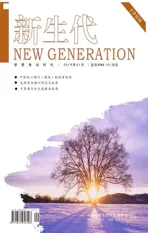汉译英典故翻译策略研究
——以《浮生六记》两译本为例
2019-11-14刘雨舟湖南师范大学湖南长沙410006
刘雨舟 湖南师范大学 湖南长沙 410006
1. 引言
对于典故,《辞海》将其释义为:“诗文中引用的古代故事和有来历出处的词语。”典故多涉及古代故事或古人的诗词歌赋和其他作品中的词句,但也不尽然。其主要来源有:历史故事或历史事件;神话传说;民间传说;文学作品;寓言故事;民间习俗、谚语等(包惠南,2001:243)。文学作品中巧妙恰当地用典能多角度展现中华民族的历史文化,包含丰富的民族心理、社会风尚和人生哲理。
在自传体小说《浮生六记》中,作者沈复描写了与其爱妻陈芸幸福安静的婚姻生活,同时还描写了其家庭变故、闲情意趣、山水游记等等,为后人生动再现了二百多年前中国文人的生活意趣。在这部优秀著作中,通篇文言行文,练字精当简练,大量使用典故,具有极高的语言艺术成就。然而考虑到中西文化差异,典故所蕴含的文化内涵往往会给译者带来困扰。因此, 如何将典故的引申意义和独特的民族特色更好地传达给读者就成为译者必须要回答的问题。本文选取林语堂译本(Six Chapters of A Floating Life)和白伦、江素惠夫妇合译本(Six Records of A Floating Life)中的典故作为研究对象,指出在东西方社会文化语境下,典故的翻译应该使目的语接受者获得与原语文本读者尽可能相同的阅读效果,以期更好地推动典籍英译的发展,帮助中国文化“走出去”。
2.《浮生六记》中的典故
沈复在《浮生六记》中频频用典,典故的使用使得论点铿锵有力,语言真挚感人,描写美丽动人。经过整理和解读,笔者按典故的来源,将其中的典故分为五类,分别是历史事件衍生而来的典故;神话传说衍生而来的典故;文学作品衍生而来的典故;民间习俗衍生而来的典故;以及人名地名衍生而来的典故。
3.典故译例对比分析
3.1 出自历史事件或历史故事之典故
(1)芸曰:“肥者有福相。”余曰:“马嵬之祸, 玉环之福安在?”
“But a plump person has good luck, ” replied Yun. “What about the fat Yang Kueifei who died at Mawei?” (林语堂,1999:221)
“Fat people have good fortune,” Yun applied.“Considering the disaster that befell her at Mawei,”I said, “Where was Yang kuei-fei’s good fortune?” (白伦,江素惠, 2017:74)
Yang Kuei-fei was an imperial concubine who was rather plump and is supposed to have so distracted the T’ang Emperor Hsuan Tsung that he almost lost the dynasty to the rebel An Lu-shan. She was executed by loyalist troops at Mawei. (白伦,江素惠,2017:130)
原文提到了“马嵬之祸”这个事件实际涉及“杨玉环”和“马嵬”两个典故。林语堂的做法是保留形象直译,而白氏夫妇采用了直译加注。林语堂的做法可能会让不了解这段中国历史的外国读者不知所云,白氏的做法无疑能让读者了解个中详情,但是由于白氏的注解不是脚注而是尾注,翻阅起来比较麻烦,可能会降低阅读体验与效率。
3.2 出自神话传说之典故
(2)但李诗宛如姑射仙子,有一种落花流水之趣,令人可爱。
But Li Po’s poems have the wayward charm of a nymph. His lines come naturally like dropping petals and flowing waters, and are so much lovelier for their spontaneity. (林语堂,1999:21)
But Li Pai’s poetry flows like a flower tossed into a stream. It’s enchanting. (白伦,江素惠, 2017:7)
“姑射仙子”是中国传统神话传说中的仙女,最早出自《庄子.逍遥游》。林在翻译时,将其译成了“nymph”( 指希腊神话中的女神),采取了改换形象意译的方法,令目的语读者易于接受。而白氏夫妇直接删去了这一典故,有失妥当。
3.3 出自文学作品之典故
(3)佳人已属沙叱利矣。
“The beauty had therefore fallen into the hands of a barbarian.” (林语堂,1999:133)
“The beauty belongs to Sha-shih-li!” (白伦,江素惠, 2017:46)
A line from a famous folk story that recounts the kidnapping of a beautiful woman by the barbarian leader Sha-shih-li during the T’ang Dynasty. (白伦,江素惠,2017:126)
“沙叱利”出自唐代许尧佐的《柳氏传》,讲的是唐代佳人柳瑶金和才子韩翊悲欢离合的故事。据载,柳氏在乱世之时曾被蕃将沙叱强行夺走,后古人以“沙叱利”指代强夺人妻的权贵。此处,林语堂舍弃形象,意译了“沙叱利”,而白、江二人则采取音译加注的方法,以向读者传达更多的文化内涵。
3.4 出自民间习俗之典故
(4)是年七夕,芸设香烛瓜果,同拜天孙于我取轩中。
On the seventh night of the seventh moon of that year, Yun prepared incense, candle and some melons and other fruits, so that we might together worship the Grandson of Heaven 1 in the Hall called “After My Heart.” (林语堂,1999:27)
1: The seventh day of the seventh moon is the only day in the year when the pair of heavenly lovers, the Cowherd (“Grandson of Heaven”) and the Spinster, are allowed to meet each other across the Miky Way. (林语堂,1999:27)
On the evening of the 7th day of the seventh month that year, Yun lit candles and set out fruit on the altar by the Pavilion of My Desire, and we worshipped Tien Sun together. (白伦,江素惠, 2017:9)
The Weaver’s Star. The legend tells that the waver and the cowherd were so much in love that they neglected both cloth and cows. Thus they were banished to separate stars, and can come together in the sky only once a year, on the 7th day of the seventh month of the lunar calendar. It is a day for lovers and for young women in search for a husband.(白伦,江素惠, 2017:121)
中国的七夕对于国内的读者来说已经是耳熟能详了,但是外国读者不甚了解。这一次两个无论是林语堂还是白氏夫妇都采取了保留形象加注的方式,以期为读者扫清阅读障碍,可惜的是林语堂译本中出现了一个错误,即把牛郎当做“天孙”,实际上“天孙”是织女的别称。因此在这个典故的翻译上,无疑是白氏夫妇的译本更胜一筹。
3.5 出自人名地名之典故
(5) 芸谓华夫人曰:“今日真如渔父入桃源矣。”
“Now I really feel like the fisherman who went up to the Peach-Blossom Spring,”1 said Yun to Mrs.Hua. (林语堂,1999: 151)
1: Reference to an idyllic retreat mentioned in an essay by T’ao Yuanming. ( 林语堂,1999: 151)
Yun told Madam Hua, “Today I feel just like the fisherman who wander into Peach Blossom Spring!” (白伦,江素惠, 2017:51)
An ancient tale immortalized by the Chin poet T’ao Ch’ien (365-427), about a fisherman who strolls through a peach orchard and discovers a mysterious valley isolated from the cares of the world. On his arrival, he is interrogated by the inhabitants of the valley about conditions in the outside world, much as Yun was being questioned by the farm women. According to the legend, the fisherman began his trek by mooring his boat at chuanchou on the Yuan River in Hunan Province. (白伦,江素惠, 2017:126-127)
“渔父入桃源”出自东晋著名诗人陶渊明的代表作《桃花源记》。原文的背景是沈复夫妇因故被迫离家,来到乡下芸的结拜姐姐华夫人家中避难,受到华家的热情款待。这与《桃花源记》中渔夫来到世外桃源时的情形相似,因此,芸有感而发,道出此语。林语堂采用保留形象加注简单地介绍了这一典故的来源。白、江二人也采用直译的方法,但他们详加注释把这个文化信息传达给了感兴趣的读者。
4.结语
典故的翻译“既要尽可能再现原文的民族特色,又要易于为译语读者所理解和接受”(包惠南,2001:250)。因此,要想成功地翻译典故决非易事,译者不仅需要精通两种语言,对两种文化有深刻的了解,而且必须充分考虑到译语读者的理解和接受水平。在《浮生六记》的典故翻译中,译者受不同的认知环境、文化倾向和译者的主体性等多种因素的影响,采取了不同的翻译方法。
白氏夫妇主要通过保留形象尾注的形式对典故中缺失的文化信息进行补偿。尾注有效地弥补了直译带来的意义损失,能更好地体现原文的文化底蕴,保有了原文本特有的文化意象。不足之处在于读者要在阅读过程中停下来,查阅尾注,这样一来,读者的阅读兴趣会受到影响,译文的美学效果也大打折扣。林语堂的译本以采取保留形象释义或者加脚注为主。其中保留形象释义是林语堂比较独特的一个策略,采用文内注释的形式简单介绍典故所代表的意义,有助于读者确立连贯的语义,阅读兴趣不会受到影响。但是从本文所列举的几个例子可以看出,此方法只能大概提及典故的内容,不能全面地介绍原文的文化内涵。
从翻译环境和目的方面来看,林译本《浮生六记》最早刊登于1935年的《天下》月刊以及《西风》上。在当时的历史环境下,美国人大多对中国怀有偏见。因此林语堂认为自己有责任将中国人的生活哲学介绍给西方读者,但考虑到目标读者的接受程度,在大多数时候还是采取了归化的策略,增加了译本的可读性。白伦、江素惠的译本于八十年代由企鹅出版社出版,在前言中,白氏夫妇也写道“…by the use of extensive but, we hope, not intrusive notes and maps - present to the modern English reader a more complete exposition of the tale Shen Fu told.”也就是说,白伦、江素惠译本在解释典故的注解方面更加详尽,就是想让当代的西方读者体会到当时当地中国的风土人情,这种译本不得不说可能也更符合目前让中国文化走出去的趋势。
综上所述,这几种典故翻译方法各有优劣。其中,在括号中添加注释是林语堂译本独有的现象。至于其它方法,林语堂和白、江二人则各有所偏。但他们都不是机械死板地采用一种方法,而是视具体情况来决定翻译方法。翻译并没有绝对的规律可循,译者应根据典故上下文含义来理解其意,并根据自己的翻译目的以及特定的读者对象选择翻译策略。
